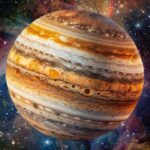Spiral galaxies, with their intricately detailed structures, have always captured the imagination of astronomers and space enthusiasts alike. A recent study published by researchers at Ohio State using images captured by NASA’s James Webb Space Telescope (JWST) has shed new light on 19 nearby spiral galaxies, revealing stunning details about their spiral arms, star clusters, and gas pockets. These images, obtained through Webb’s NIRCam and MIRI instruments, provide a mesmerizing glimpse into the star formation cycle within these galaxies.
The study, which was published in The Astronomical Journal, not only showcases the breathtaking beauty of these neighboring galaxies but also offers valuable insights into how galaxies distribute their gas and dust. According to Debosmita Pathak, the lead author of the study and a graduate student at Ohio State, the similarities observed in the outer parts of galaxies hint at universal processes in star and planet formation across different galaxies.
Each of the 19 spiral galaxies captured by JWST, including IC 5332, NGC 1087, NGC 3351, NGC 1385, NGC 4303, NGC 1365, NGC 1300, NGC 2835, NGC 7496, NGC 1566, NGC 4536, NGC 1672, NGC 1433, NGC 1512, NGC 5068, NGC 4321, NGC 4254, NGC 3627, and NGC 0628, showcases unique characteristics that contribute to our understanding of galaxy evolution.
For instance, IC 5332 exhibits a ‘face-on’ position, allowing for a clear view of its disk, while NGC 1087 boasts a stellar bar and hosts a supernova named 1995V. These galaxies, each located millions of light-years away from Earth, provide valuable data on dust distribution and star formation processes.
Overall, the images captured by JWST as part of the PHANGS-JWST Cycle 1 Treasury survey offer a glimpse into the cosmic beauty and complexity of spiral galaxies, enhancing our knowledge of the vast universe around us.







